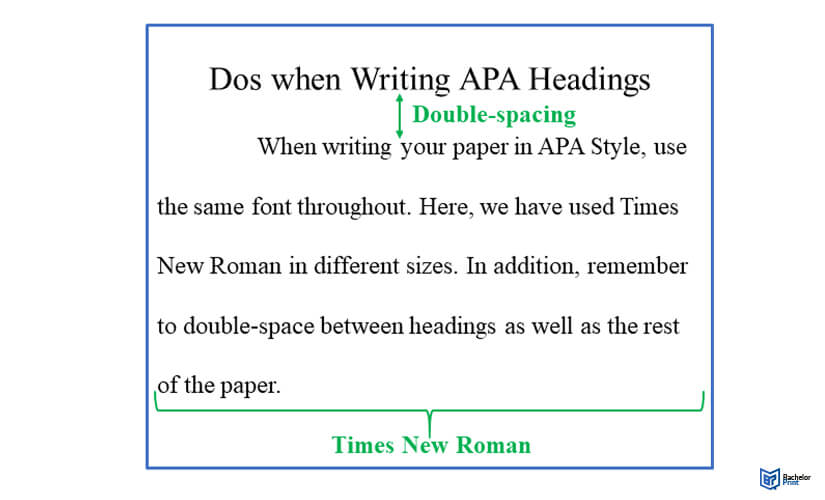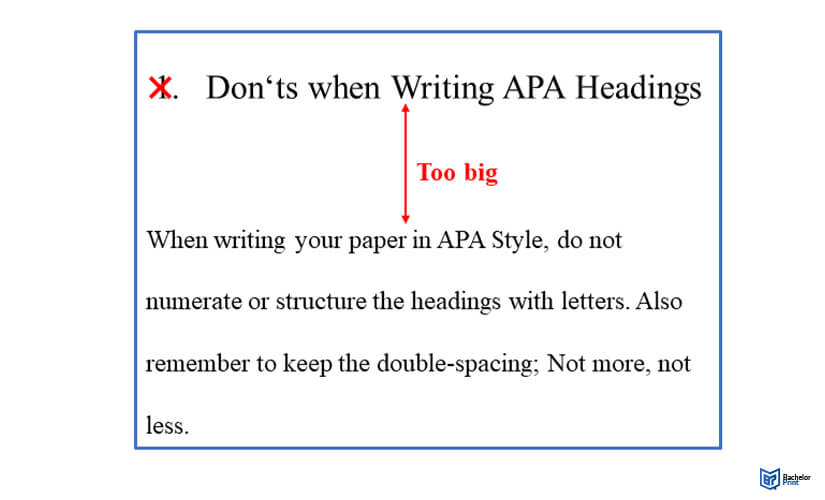
In academic writing, APA headings provide a clear, hierarchical structure to your paper, guiding your reader through your arguments and findings. Most importantly, they signal each section and allow easy navigation for readers. For this reason, universities and other academic institutions have strict rules on writing headings and subheadings. One of the most common rules in the APA Style is using APA formatted headings, which this post will discuss in detail.
Definition of APA headings
APA heading is a widely used formatting style for organizing information in a heading to enhance its readability. This style uses unique heading systems to separate and classify various paper sections. The purpose of these headings in academic writing is to guide the reader through the document. They also help organize different paper sections and give your academic writing more structure.
The five levels of APA headings
APA headings have five basic levels, each with different formatting. The table below provides a guide to the five APA heading levels:
| Level | Formatting | Example |
| 1 | • The heading should be bold and aligned to the center. • Double-space the text and use the title case. • Texts after this heading start as a new paragraph and the first line must be indented. |
(new paragraph starts here, the first line has an indent.) |
| 2 | • Left-align the text • Use the title case, and make it bold. • Ensure that the text after the heading begins on a new line |
Site of Study (new paragraph starts here, the first line has an indent.) |
| 3 | • Heading must be left-aligned, bold, italic, and in the title case. • Text after the heading in this level begins as new paragraphs. |
Heading Levels (new paragraph starts here, the first line has an indent.) |
| 4 | • The headings should be indented, bold, title case, and ending with a period. • The following text begins on the same line and continues as a regular paragraph. |
Applications in New Levels. (text begins here.) |
| 5 | • The heading must be indented, bold, italic, title case, and end with a period. • The following text starts on the same line as in level 4. |
Benefits of Each Level. (text begins here.) |
When formatting APA headings in an academic paper, there are some things you should always remember:
- Double-space the whole paper, also the headings
- Use the same font for headings and body text

In contrast, there are some things you should remember NOT to do when formatting APA headings in academic papers:
- Do not list headings with numbers or letters
- Do not add extra spaces above or below headings

Note: When writing longer papers such as dissertations and theses, it may be relevant to number or label your headings. This always depends on your supervisor or university; their rules are always superior to the general APA guidelines.
When to use which level of APA headings
Use the levels depending on the level of subordination. Below is a table outlining when it is relevant to use which level of APA headings:
| No. of levels | When to use the heading level |
| 1 | The main title or idea of your paper |
| 2 | The subheadings underneath your main idea |
| 3 | If your subheadings have further sections that cannot be explained together |
| 4 | If you need to under-categorize the subject of level 3 headings into further sections |
| 5 | Only use for complex and extensive sections with subheadings under the level 4 headings |
A guide for APA headings
- Use heading level 1 for the main sections of your paper, such as the title and the beginning of each major section.
- Use level 2 for subheadings of the level 1 headings.
- Use level 3 for further subsections of the level 2 heading sections.
- Use level 4 and 5 APA headings for more subsections of each section.
One section may have all five levels or fewer, depending on its complexity.
APA headings in the form of section labels
In academic writing, APA headings may also serve as section labels. Section labels are introductions for different thoughts and segments of your paper. The headings give the reader a brief idea of what to expect from the following part. Moreover, they provide structure to your headings by using different levels of APA headings for different sections and subsections.
Formatting APA headings in Microsoft Word
When formatting APA headings in Microsoft Word documents, you do not need to format each heading individually. Instead, you may use the “Styles” feature. All you need to do is follow the steps below:
- Select your text or heading
- Click on the “Layout” button in the upper menu
- Choose “Margins” and then “Normal”
- Set your font to “Times New Roman” in size 12
- Enable double space by choosing “Home” then “Line”, and then “Paragraph Spacing”
Another benefit of using the “Styles” feature in Microsoft Word is that it allows you to generate tables of contents for your paper automatically.
Examples of APA headings
Here are examples of using the levels of APA headings in different scenarios:
FAQs
The formatting technique depends on the heading level.
For instance, level 1 APA headings are formatted by aligning them to the center and writing them in bold and Title Case.
There are five APA heading levels. Each level has different formatting requirements, which apply to other sections of your paper.
The number of heading levels you use should depend on the length and complexity of your paper. For instance, shorter papers do not need all five headings, while longer ones may gain a better structure from the five levels. In addition, it is perfectly okay for some sections in your academic paper to have five levels, while others have less or one.
